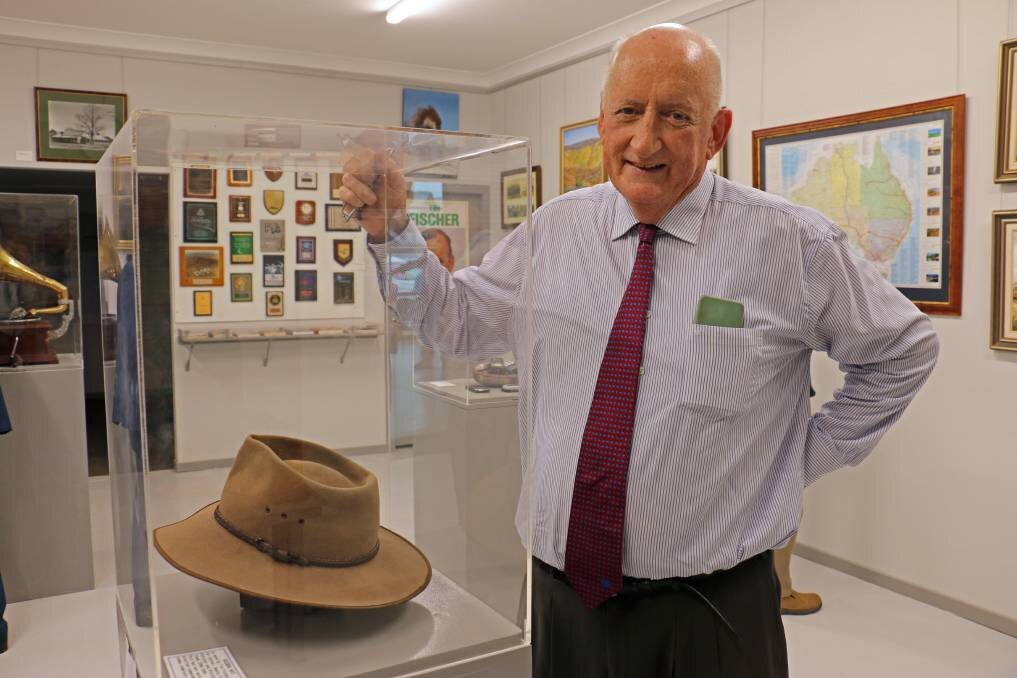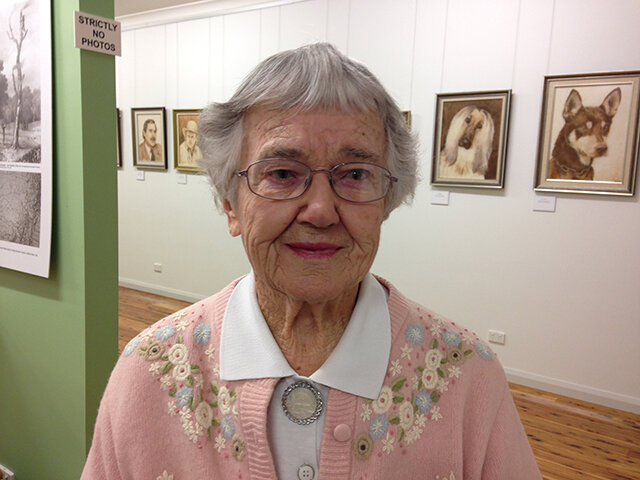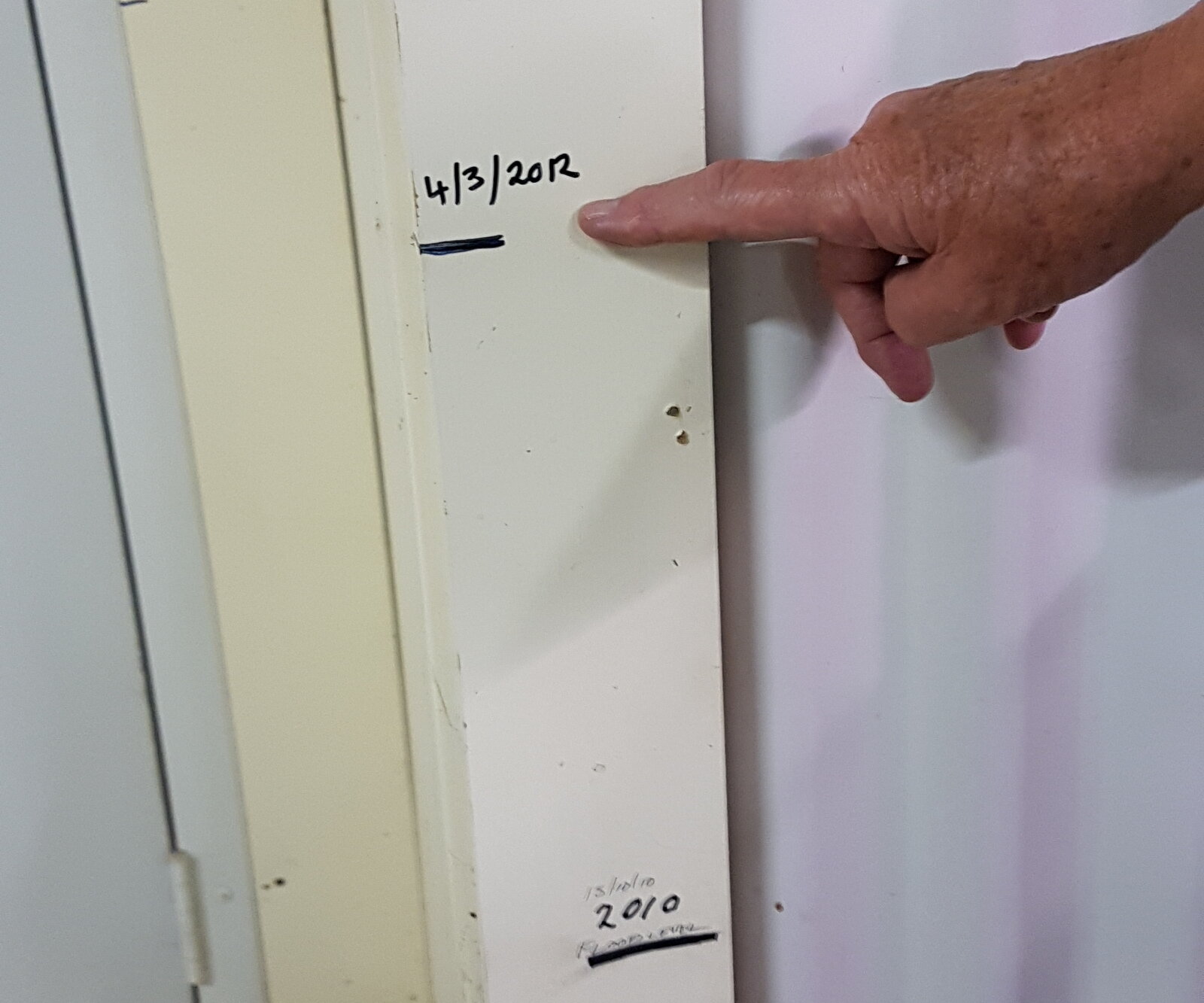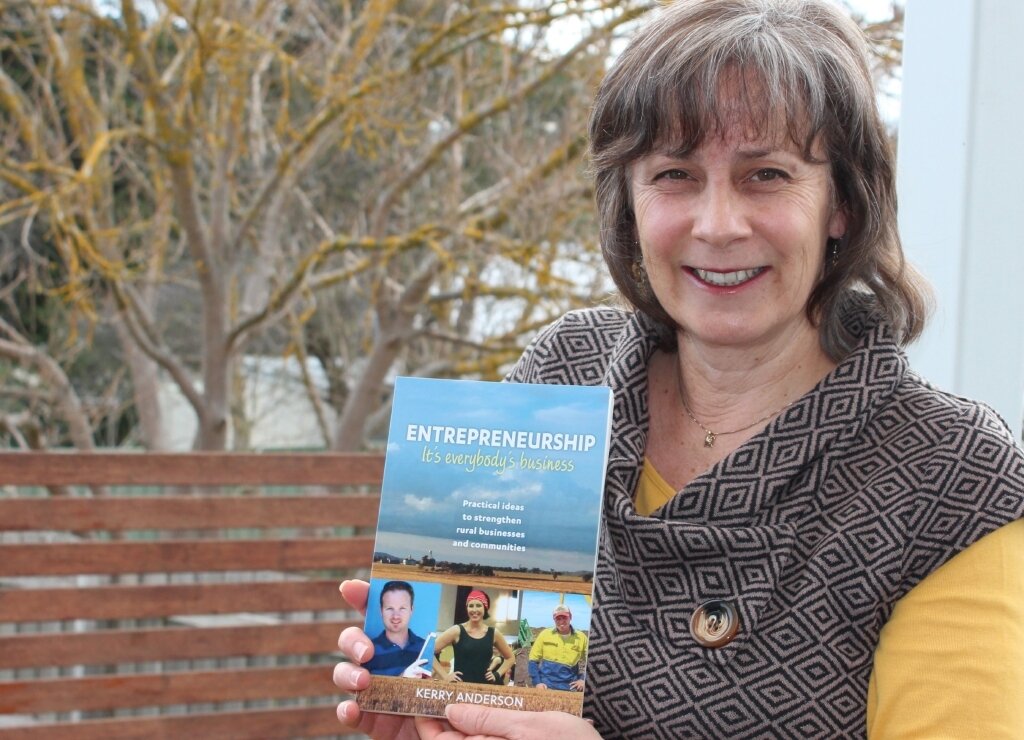Greens Gunyah Museum
RURAL TOWNS FIGHTING BACK series by Kerry Anderson
Understanding the difference between a ‘clean’ and a ‘dirty’ flood is not part of the usual volunteer learning but incredibly this has been the experience of the Greens Gunyah Museum volunteers in Lockhart, New South Wales. Despite many challenges over the past decade the community has created one of those hidden jewels in rural Australia that continually surprises unsuspecting visitors.
Heather Trevaskis, President of the Lockhart & District Historical Society that operates the Greens Gunyah Museum with the assistance of 35 volunteers.
If you want to know anything go to Greens Gunyah Museum, I was instructed upon my arrival in the agricultural town of Lockhart NSW. Being my first visit, I did indeed want to know lots. For starters, why was the Museum called this name? Why did former Deputy Prime Minister, The Hon. Tim Fischer, donate his political and train memorabilia to this rural town with a modest population of 1,000? And, finally, who is Jackson Strong? My son still can’t believe that I asked this last question!
A quick google search resolved the first question quickly enough. It appears that this Riverina outpost was originally known as Greens Gunyah in recognition of the most notable enterprise of that time; a roadside inn and Cobb & Co stopover. Gunyah means an Aboriginal bush hut or shelter, with the extra descriptor of ‘crude’ no doubt thrown in by our condescending European ancestors.
In 1897 the township was named Lockhart after one of the early Commissioner for Crown Lands. It seems that government assumed naming rights over residents in those days; however, locals decided to acknowledge the original settlement name when Greens Gunyah Museum was opened by the Lockhart & District Historical Society in 1972.
An avid history lover, I was looking forward to the usual smattering of local stories and donated collectables similar to what I remember from my grandparent’s home. What I didn’t expect was the calibre of the collection and support of significant national figures that call Lockhart home.
Pressure was on the Museum’s volunteers in 2019 to fit out a recently purchased adjacent building to house the Hon. Tim Fischer’s collection. It was no secret that Tim, a former Deputy Prime Minister and one of Lockhart’s most notable residents, was unwell. He quietly asked for a ‘soft opening’ to be brought forward to May so he could attend. Volunteers worked hard to complete his room even though the official opening would not take place until October.
‘It was a beautiful day,’ says President of the Lockhart & District Historical Society, Heather Trevaskis. ’Tim asked that the students from his old school be invited. There were no politics that day even with the current Deputy Prime Minister in attendance. Tim being Tim, he planned the whole day.’
During his political career Tim Fischer collected many things. Understandably he valued gifts such as one he received from the King of Bhutan; however, with his incredible love of the Australian people, he also donated to the Museum an entire collection of cake and lolly tins pressed into his hands as gifts during his decades of travel as a politician across regional Australia. ‘He kept every single one!’ says an incredulous Heather. His collection also includes every mobile phone he used in a marvellous record of every day Australian life. And of course, a Tim Fischer collection would not be complete without his iconic hat and collection of train memorabilia.
In another unexpected gesture, the Museum more recently received a bequest from Tim’s estate which will be utilised to upgrade older buildings and displays, and for educational programs. ‘He was thinking of us until the end,’ says an appreciative Heather.
Fortunately, investing in their hometown is not limited to older generations. Of great interest to younger visitors is Jackson Strong, World X-Games Freestyle Motocross Champion, who also has a dedicated room in the new Museum extension that was officially opened in October 2019.
‘Jackson has donated one of his early motorbikes as well as a video he has made of his life,’ explains Heather. As avid fans world-wide will testify, any video that Jackson makes is hot viewing and not for the faint hearted. Oblivious, I went to Lockhart knowing nothing about Jackson, and a few short weeks later was standing next to his promotional cut-out figure in a Subway store back in Victoria. ‘How could you not know Jackson?’ my son lamented. Well I do now!
And then there is Doris Golder, another local who has no claim to fame until you view her collection of wool art which, even to my untrained eye, is incredible. Heather shows me around and I am blown away by her eye-catching portraits made from Australian merino wool. Each one took three to four months, or in the case of the Fred Hollows portrait, 18 months to make. Doris, now in her 90’s, donated her iconic collection to the Museum and appropriately has become a big tourism draw card in its own right.
Despite its rural location the Greens Gunyah Museum is kicking some impressive goals. Open seven days a week thanks to 35 volunteers, it also hosts the Visitor Information Centre. In 2018 it was Highly Commended in the NSW Museum and Galleries Awards and four items in its collection were selected to feature in the Talking Machines film that can be viewed in the Museum’s media room.
I am always interested in the back story of the volunteers behind a successful enterprise. As usual, I am inspired by what I hear.
Before I even learn about the famous sons and daughters of Lockhart, Heather takes me to the older section of the Museum, previously an old store. She stands in front of a flood marker and explains to me the difference between a ‘clean’ and a ‘dirty’ flood. It is a sobering story.
The first significant flood occurred in October 2010. ‘We knew it was coming,’ recounts Heather. ‘We started to put stuff up from the lower areas but then had to evacuate, hand in hand, wading through the flood waters across the road. What we learned was that not all volunteers are available when you need them. We now have a disaster plan!’
While Lockhart had experienced floods in the 1930’s and 1970’s this was the first time that flood waters had entered the buildings and it is now a part of its history. With many display units ruined there was significant damage to some of their old maps and papers. Advice was taken from the Riverina Museum in Wagga Wagga and even the school children stepped in to help freeze dry and separate the papers under supervision.
‘It took three months to dry everything out. First we hosed mud out of the lower buildings and then we brought in the fans to deal with the mould.’
Emotionally drained from getting the Museum back in operation, it was with absolute horror that the Lockhart experienced a second flood in March 2012. ‘The insurance had only just paid for the carpet to be replaced from the 2010 flood,’ Heather recalls. ‘Our volunteers were busy dealing with their own crises, and even with the filing cabinets raised, there was still water damage.’
To add to their trauma, this was a ‘dirty’ flood with more mud because the paddocks were bare with loose topsoil at that time of year. ‘Our local member waded up to the front door in gum boats,’ recalls Heather. ‘He said we cannot do this again, and we agreed.’ However, instead of giving up they started exploring how they could flood proof the Museum.
As I always say, never underestimate the power of a rural community working towards a common purpose. With the assistance of grants from the Bendigo Bank and State and Federal Governments, the Lockhart community managed to raise $370,000 and two years later in October 2014 officially opened a new building.
‘We built new modern contemporary premises to house the Doris Golder collection that is well above the flood level and at the same time improved accessibility with ramps.’ While the old shop and timber yard still form an important part of the Museum very little, apart from large machinery, is displayed at ground level.
In 2015, within six months of this mammoth effort by a small community, Heather explains that the former Billabong Motors building located next door to the Museum came up for sale. They couldn’t possibly, I think to myself. Yes, they could!
We just couldn’t let it go by!
‘We just couldn’t let it go by,’ Heather confirms with a smile. ‘This opportunity was never going to come up again, so once again the community came on board and we were able to make it happen.’
Looking for a permanent home for his personal collection, The Hon. Tim Fischer was happy to join their fundraising committee. A special account with tax deductible status was hosted by the Foundation for Rural & Regional Renewal enabling the Society to raise $87,000 in cash donations from the community. Significant grants were obtained through various philanthropic and government funds. Council also played a significant role by paying the deposit, purchasing the unwanted vacant land, and providing a loan to enable the Society to cover the remaining purchase price of the building.
Even though the Billabong building was relatively modern, it still wasn’t as easy and straight forward as the Society hoped. ‘There was a lot of cleaning, painting, and installation of emergency lighting and exit doors,’ says Heather. ‘There were a lot more regulations than we anticipated.’ But persevere they did, and the building is now officially open as part of the Museum.
It has been a mammoth effort by a small rural community. Since that second fateful flood in 2012, close to $700,000 has been raised to construct and redevelop these two facilities to house new collections and attract visitors to Lockhart and the Riverina.
As the clock ticked over into 2020, I caught up with Heather by phone. She explains that 35 active volunteers are doing a great job of keeping the doors open pretty much seven days a week to the public even though their Grade 2 status as a Visitor Information Centre requires less.
‘We value visitors to our town and, if on occasions we can’t fill a shift, we put a note up asking them to call a number and we will happily come down and open up.’ She proudly tells me that a new Bakery has just opened its doors. Like all rural people, she understands the importance of small business.
Heather agrees wholeheartedly when I comment that Lockhart’s past decade started on a low but ended on a high. She then starts to tell me about their plans in the coming year to install solar panels and to redevelop the old shop buildings, and I can’t help but smile.
In such a busy world I could have easily driven straight through this rural community. Thankfully I didn’t. Now I know the difference between a clean and a dirty flood. I also know who Jackson Strong and Doris Golder are, and I’m reminded of what an incredible contribution Tim Fischer has made to regional Australia. Most important of all, I am reminded that, despite what we might perceive at first glance, rural towns are incredibly strong. You just have to slow down to discover this for yourself.
https://visitlockhartshire.com.au/heritage/greens-gunyah-museum.aspx
Greens Gunyah Museum Facebook page
Visit Lockhart Shire Facebook page
You may also enjoy reading these other articles in the series Rural Towns Fighting Back:
KERRY ANDERSON: Founder of the Operation Next Gen program and author of ‘Entrepreneurship: It’s Everybody’s Business,’ Kerry works with small businesses and rural communities to help them embrace new opportunities. In 2018 she was named as one of Australia’s Top 50 Regional Agents of Change. READ MORE





